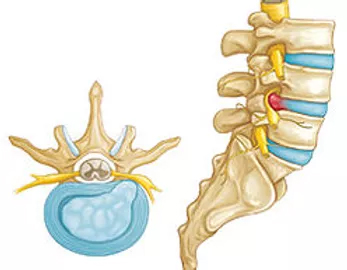
Most cases of back and neck pain resolve with minimal medical intervention. In fact we strongly recommend that you see your Primary Care Physician who can usually initiate treatment. Very few people with back and neck pain need a surgical procedure. There are a wide variety of non-surgical treatments that are usually successful in treating back and neck pain. Some of the most common non-surgical treatment options are physical therapy/exercise, medication, spinal injections and alternative medicine.
Physical therapy combines passive modalities with therapeutic exercise to rehabilitate the spine and other parts of the body. Examples of passive modalities that physical therapists administer to patients include: heat/cold therapy, ultrasound, manual traction, inversion tables, transcutaneous electrical nerve stimulation (TENS), massage therapy and aquatic therapy. Physical therapists will often teach patients a home program to follow which can include:
- Stretching exercises to increase flexibility.
- Strengthening exercises to improve the spine's ability to absorb stress and strain.
- Postural modification to rehabilitate the spine and prevent re-injury.

We use a wide variety of medications to choose from to treat back and neck pain. Some medication is available over-the-counter (OTC) and other types must be prescribed. In general, medications to relieve back and neck pain include:
- NSAIDs (Non-Steroidal Anti-Inflammatory drugs) help to decrease inflammation and promote healing.
- COX-2 Inhibitors (a type of NSAID) may allow patients to take higher doses without the accompanying gastrointestinal side effects from conventional NSAIDs.
- Acetaminophen, an analgesic used exclusively for acute pain. It can be used alone or in combination with NSAIDs.
- Muscle relaxants are often prescribed for severe pain. However, some experts believe that NSAIDs are just as effective.
- Opioids are carefully prescribed for back pain due to their addictive nature. These drugs are not a first line of treatment, but may be used in select situations.
We do occasionally refer patients to undergo a spinal injection procedure. Spinal injections serve two purposes - to relieve pain and secondly as important diagnostic tools the doctors use to help determine the cause of the pain. Two common types of spinal injections are: Facet Joint Injections and Epidural Steroid Injections. Facet Joint Injections help to reduce inflammation and pain originating from one or more facet joints. These joints are located at the back of the spine and are important to movement. Epidural Steroid Injections or ESIs deliver pain relieving medications into the epidural space. The medicine flows through the space, coating the nerve roots and the outside lining of the facet joints. We do not use spinal injections as the only remedy to relieve pain. Rather, spinal injections should be part of a treatment plan that includes other therapies such as physical therapy and therapeutic exercise. Talk to the physicians at NJOC to see if spinal injections might be right for you.
Alternative medicine encompasses a wide variety of treatment options, many of which originated centuries ago. A few of the most common alternative medicine treatments used for back pain include: Acupuncture, biofeedback techniques and chiropractic care. There are many other types of alternative therapies. If you decide to try one of these, be sure that it is administered by a reputable practitioner. Also, be sure to talk to your physician about any of these therapies before you begin, to make sure they will not interfere with your other treatments.